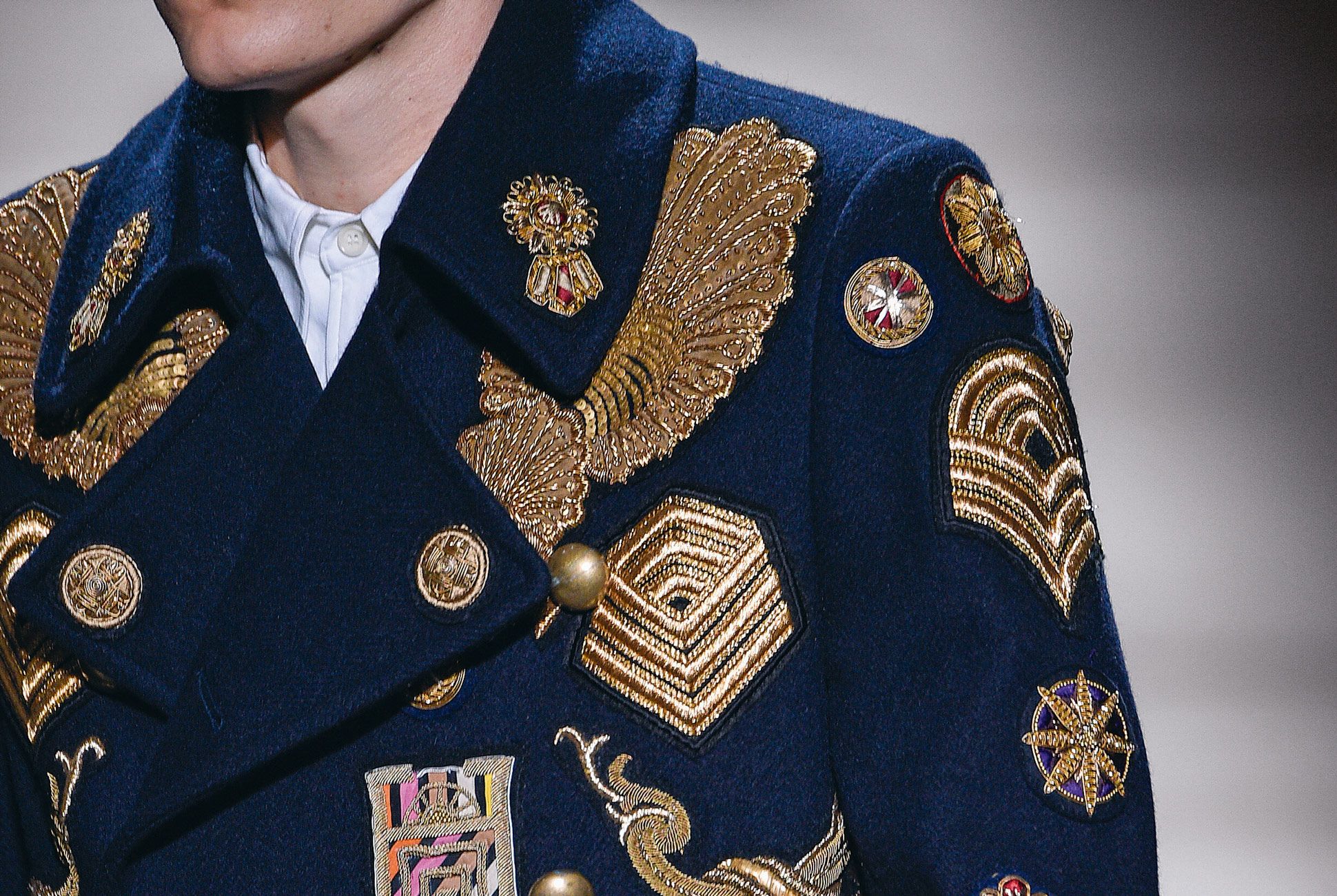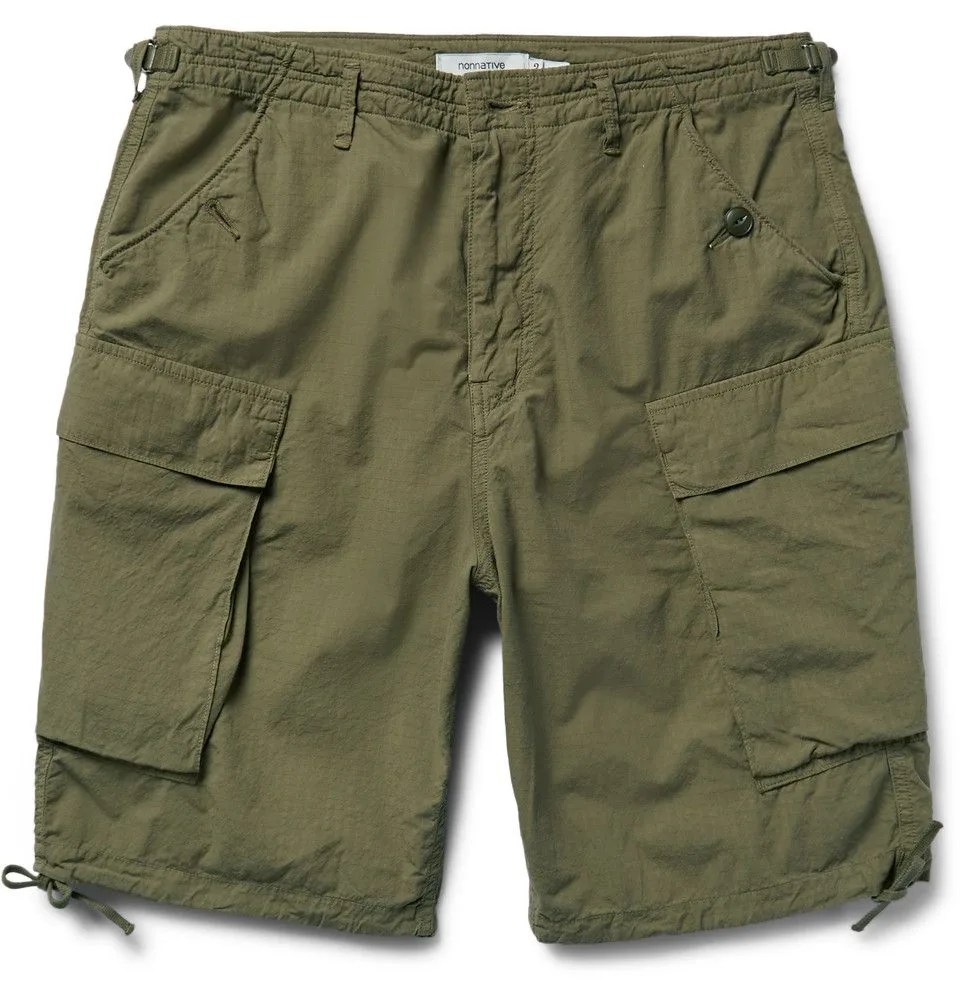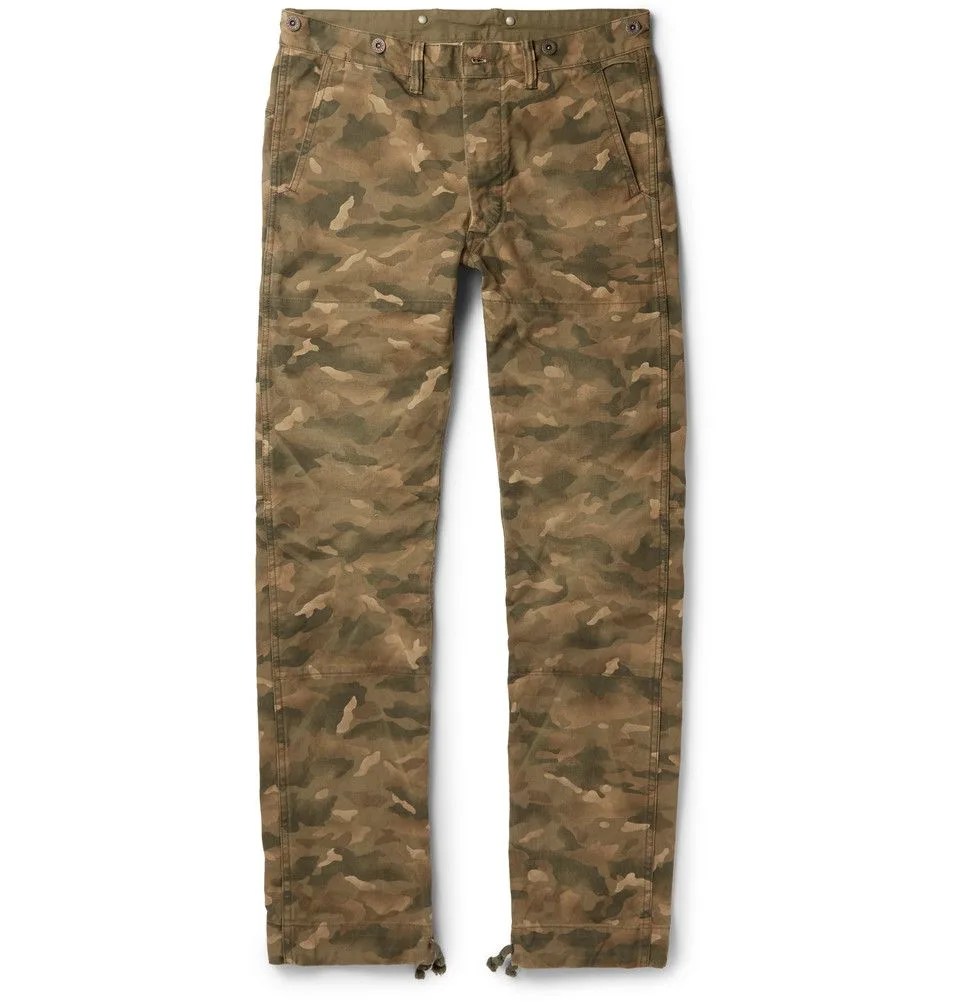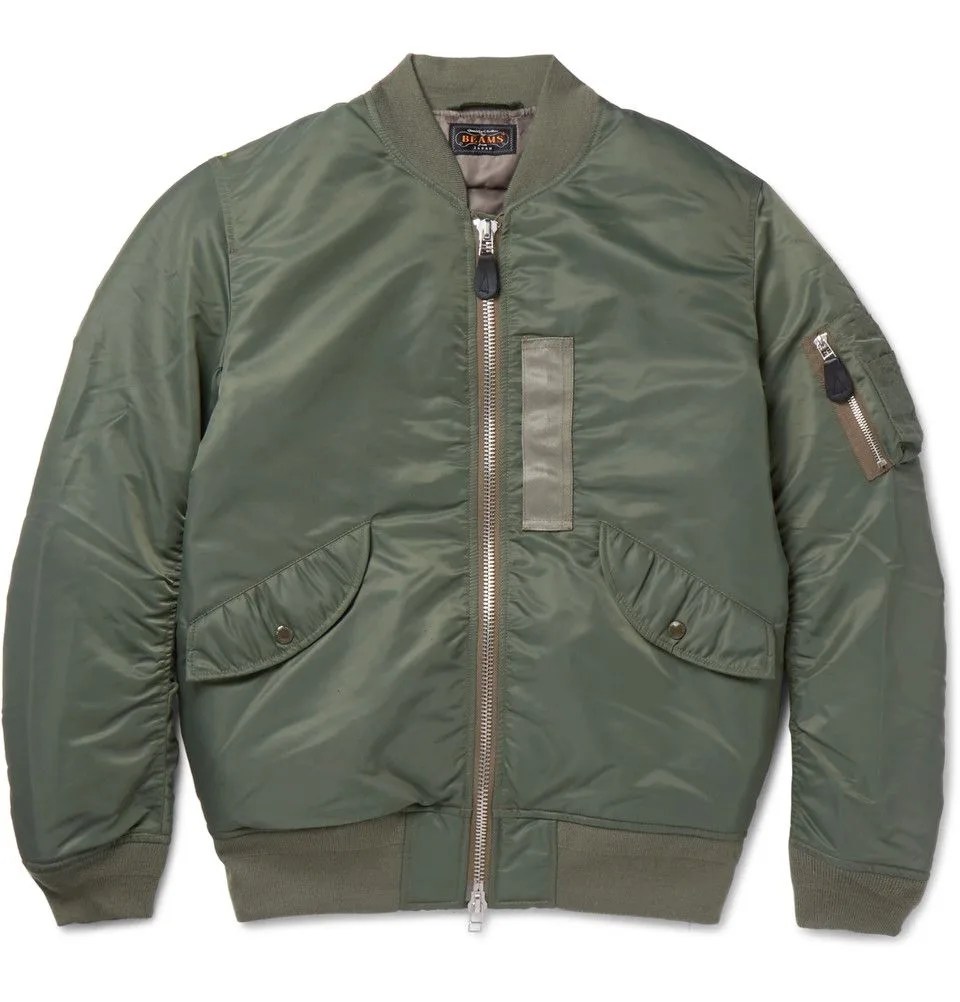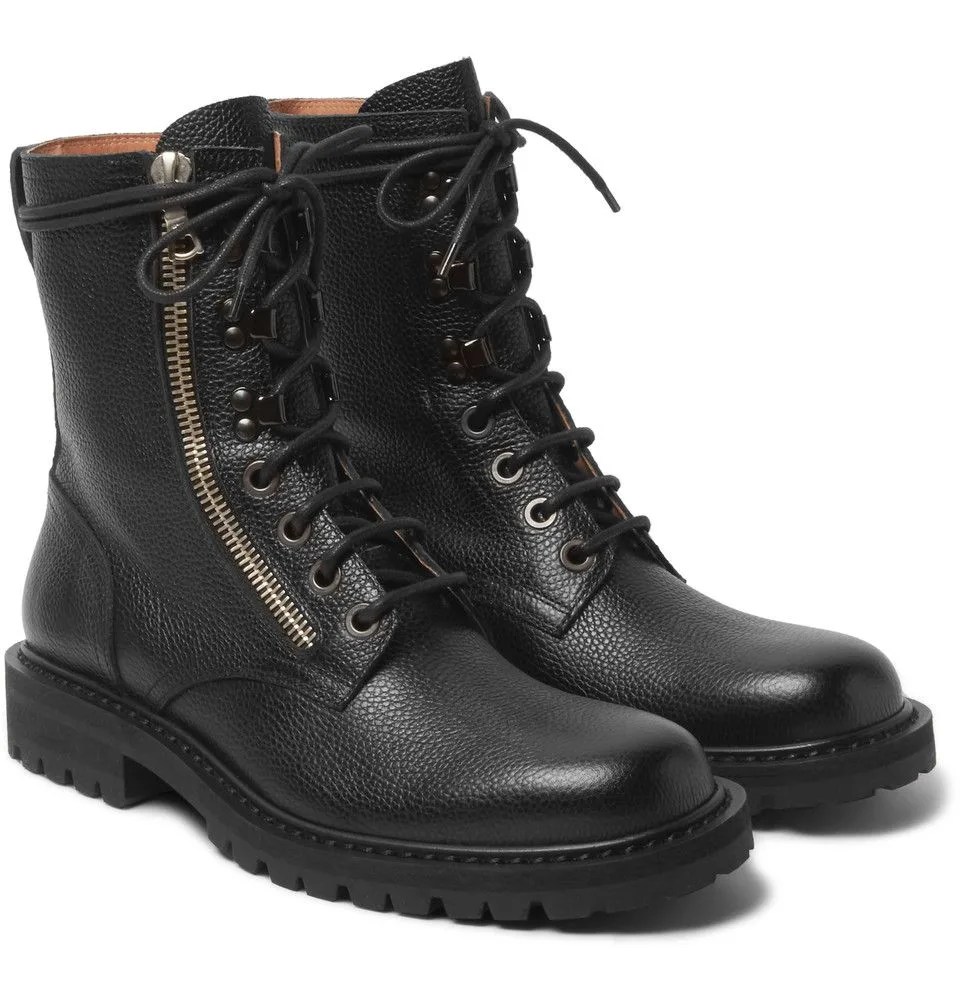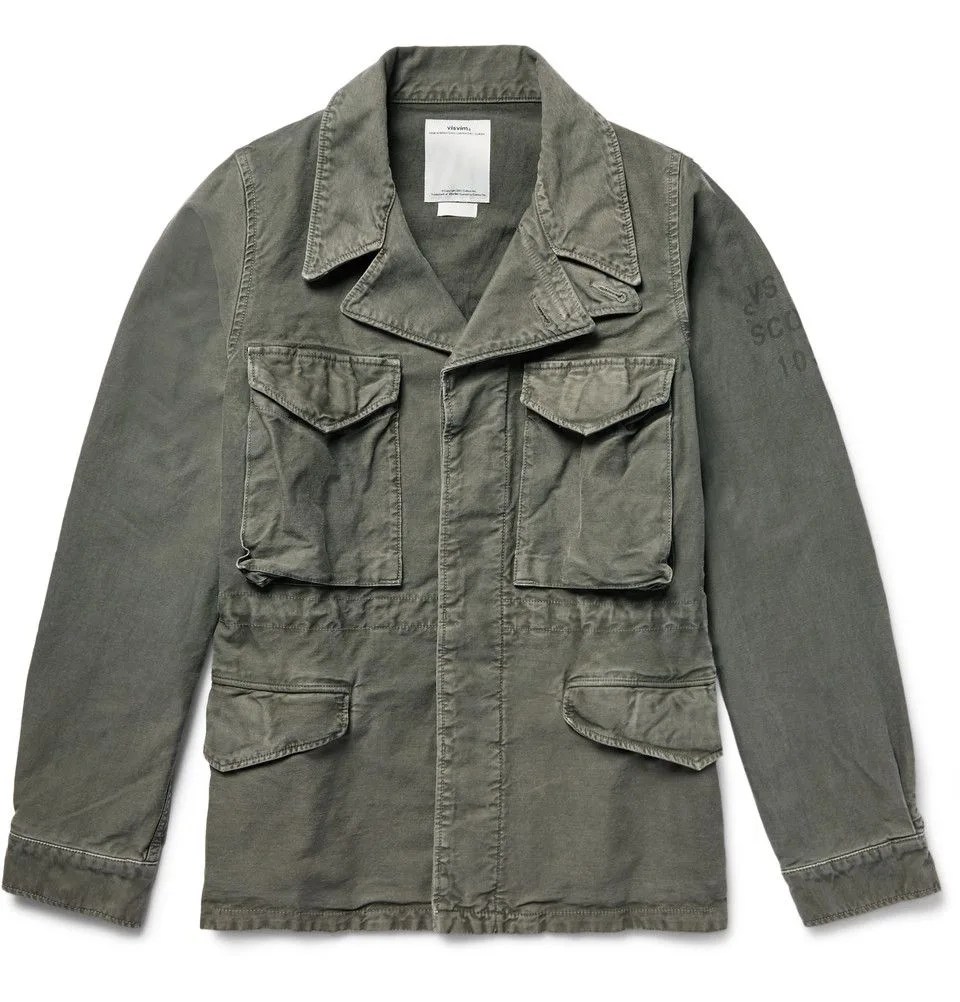Military style has permeated civilian fashion for decades, and wardrobe staples ranging from the peacoat to the white t-shirt can trace their roots back to combat garb. In Military Style Invades Fashion, Timothy Godbold explores this cultural trend in thematic chapters such as Ceremony, Campaign, Legionnaire and Nautical, among others. Along with text explaining the historical significance of different garments and the implications of wearing them in a civilian setting, the book includes 180 photographs from the runways, streets and fashion campaigns, highlighting garments derived from the armed forces. One part cultural commentary, another part fashion reference book, Military Style Invades Fashion is a required read for anyone interested in the history of their bomber jacket.
Editor’s Note: The following excerpt is from Military Style Invades Fashion by Timothy Godbold (Phaidon). Copyright 2016.
For well over a century, fashion has rummaged through the soldier’s kitbag. The trench coats, aviator jackets, drab green fatigues, parkas, T-shirts and camouflage regularly available from fashion brands worldwide, are based on uniform fit for military action rather than ceremonial display; designed for practicality rather than exaggeration, for blending in rather than standing out.
The oldest is also the most familiar: the trench coat, as worn by everyone from Humphrey Bogart to Beyoncé. It owed its creation to the English tailor Thomas Burberry, who designed it in 1879 after inventing waterproof gabardine — but it owed its popularity to its adoption by British officers on the Western Front in World War I. With epaulettes to display rank and a chest flap to cover a gun, the coat was light but weatherproof. After the war it was adopted by Hollywood, and began its long association with glamour. Decades later, Burberry offered a trench coat in silk taffeta — and the last place anyone would wear it would be in the rain.
Out of sight — literally — the t-shirt was introduced by the US Navy during the Spanish-American War in 1898. It was intended as an undergarment, however, and was kept hidden by everyone except manual laborers until after World War II, when army surplus filled the bins of thrift stores and the t-shirt became beloved of the young. The glamorous T-shirt arrived in the 1990s, when Helmut Lang added a logo to make the most humble of garments something for the elite to lust after.
The shearling aviator jacket underwent a similar trajectory from practicality to glamour. Designed in World War II to insulate bomber crews flying at high altitudes, the British RAF’s Irvin jacket was made from thick sheepskin, with a large collar to protect the neck and a waist belt to stop drafts. The US Army Air Force equivalent, the A-2, combined horse leather with elasticated knit at the waist and cuffs. In the 1980s, appearances in movies such as Raiders of the Lost Ark and Top Gun made the A-2 a must-have for the Studio 54 set, worn with jeans, obligatory Ray-Ban Wayfarer sunglasses and, for women, high heels. Fast-forward to Burberry in 2010, and Christopher Bailey’s versions of British RAF aviator jackets prepared the wearer for a very chic urban battlefield indeed.
The clothes we wear create our own personal mythology, so youth gangs and political movements are particularly drawn to the subversive associations of clothes linked to military discipline and order. In the 1960s, English Mods appropriated the green army parka, while US hippies adopted khaki or camouflage drill jackets and US Navy bell-bottoms to denounce the Vietnam War (it didn’t hurt that military surplus was usually cheap). At the end of the twentieth century, camouflage on the streets reflected the dusty, sandy battlefields of Helmand and Fallujah where the War on Terror was being waged.
